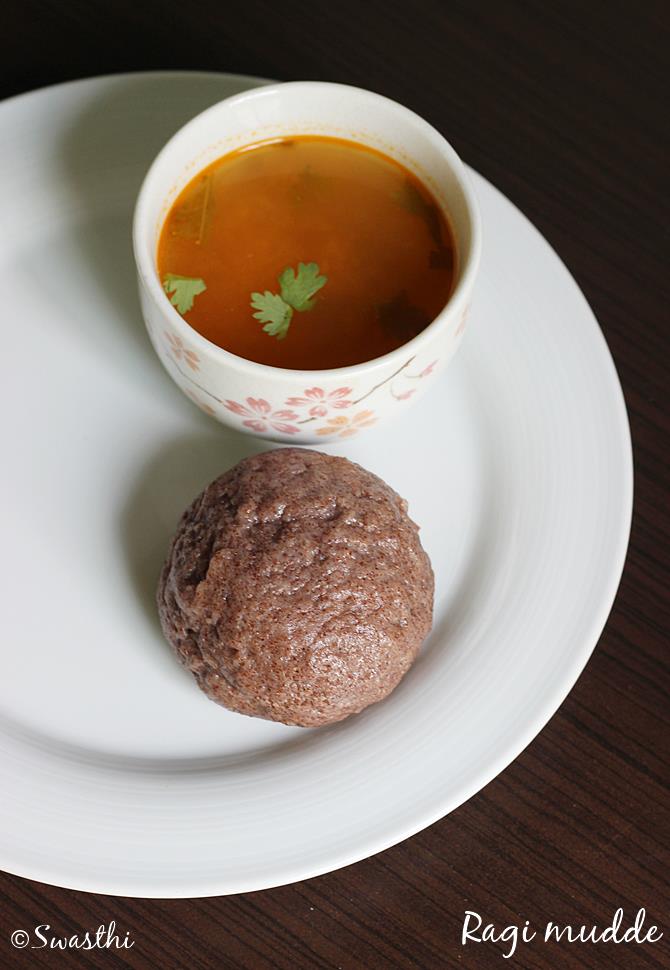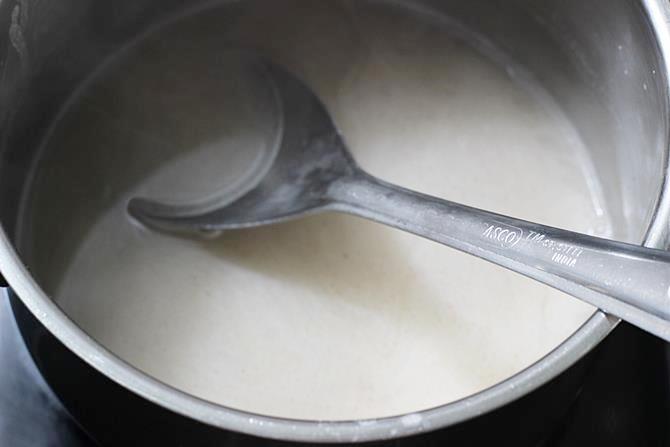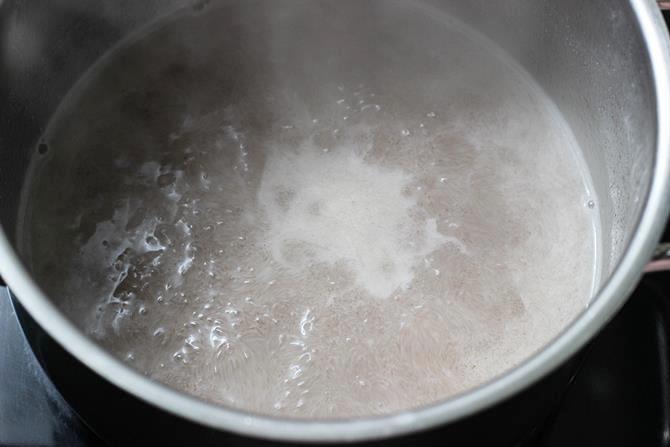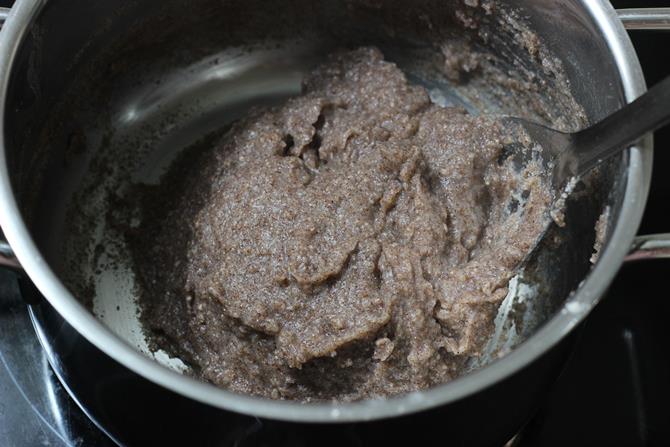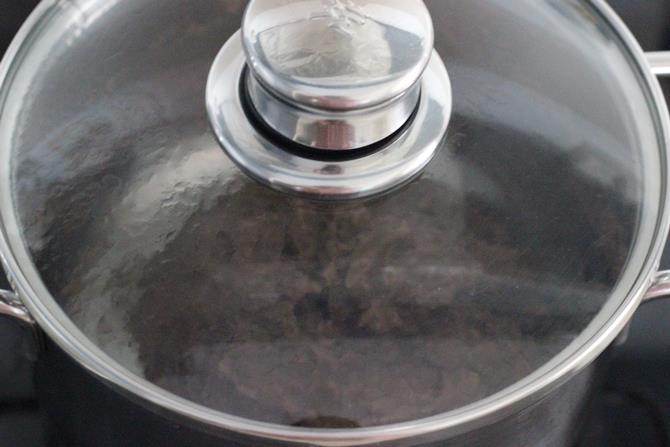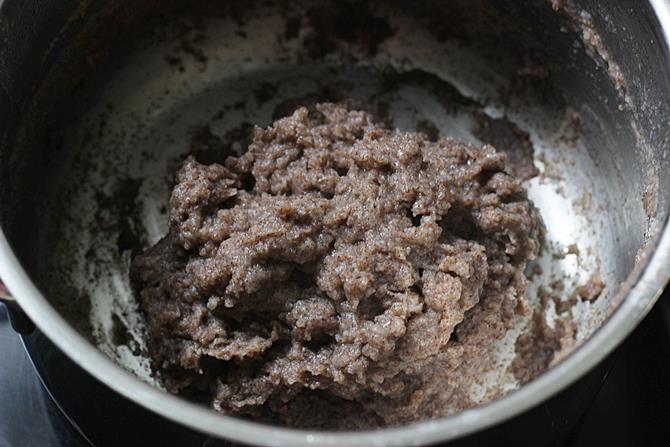What Is a High Fiber Diet?
Learn to identify soluble, insoluble, and prebiotic fiber so you can access the benefits of a high fiber diet. Our in-depth guide offers sample high fiber diet plans, high fiber recipes, and more.
By Elizabeth Laseter August 15, 2017
Pin
FB
More
Healthy Food Heart
GETTY: COURTNEYK
Do your eating patterns reflect a high fiber diet? The Academy of Nutrition and Dietetics recommends 30 to 38 grams of dietary fiber each day for men, and 21 to 25 grams for women. Chances are you may be falling short—in 2015, the Academy found that Americans typically eat 17 grams per day, and stressed the importance of eating more high fiber fruits, vegetables, grains, legumes, nuts, and seeds. Everyone can benefit from eating more fiber throughout the day, whether it’s at breakfast, lunch, or dinner. Jamie Vespa, MS, RD, says, “High fiber foods are excellent sources of healthful, disease-fighting nutrients and phytochemicals. Consuming these foods often can help lower your risk of heart disease, reduce systemic inflammation, and aid in weight management.”
Fiber is a complex carbohydrate found in the cell walls of all plant-based foods. While the body converts other carbohydrates such as starch into simple sugars for energy, it’s not able to fully break down fiber. Fiber actually passes through most of your body’s digestive system undigested until it reaches the large intestine, or colon. Depending on its function in the digestive system, fiber can be soluble, insoluble, or prebiotic, and is found in these categories of plant-based foods:
Fruit
Vegetables
Whole grains
Legumes
Nuts and Seeds
Struggling to cook healthy? We'll help you prep.
Sign up for our new weekly newsletter, ThePrep, for inspiration and support for all your meal plan struggles.
SIGN UP
A high fiber diet packs many impressive health benefits. Eating more fiber can help you maintain a healthy weight by keeping you full and reducing the chance of overeating. Adding more fiber to your diet can help lower cholesterol, which may prevent chronic diseases such as type 2 diabetes and heart disease. High fiber foods may also reduce the risk of certain cancers and promote a healthy gut by helping waste to pass through your digestive system efficiently. Our high fiber diet guide teaches you everything you need to know about this heart-healthy way of eating, including how to identify the best sources of fiber. Our sample high fiber meal plan includes recipes for breakfasts, snacks, and more, so you can jump start a fresh routine to better health.
Soluble Fiber
What is Soluble Fiber?
When soluble fiber enters our digestive system, it dissolves in water and takes on a viscous, gelatinous form. This type of fiber is typically derived from the inner flesh of plant-based foods. In the large intestine, soluble fibers such as pectin (the same “pectin” found in jams and jellies), inulin, gum, mucilage, and beta glucan mix with partially digested foods to help them pass more efficiently.
Health Benefits of Soluble Fiber
Soluble fiber promotes a healthy heart by regulating cholesterol levels in the body and by lowering blood pressure. For example, pectin helps limit the amount of fat your body absorbs from certain foods, while beta glucan is strongly linked to lowering bad cholesterol. Soluble fiber can also be very beneficial to those with type 2 diabetes by helping to lower and regulate blood glucose levels. A healthier blood glucose level may also lead to a reduced need for insulin in some diabetics.
See More: Top 8 Cholesterol-Lowering Foods
Foods High in Soluble Fiber
Soluble fiber is often associated with the flesh or pulp of foods such as potatoes and oranges. Depending on the food, cooking can make the consistency soft and mushy—think oatmeal, baked pears, or boiled sweet potatoes.
Whole-grain oats
Barley
Black beans
Lentils
Raspberries
Apples
Sweet potatoes
Oranges
Insoluble Fiber
What is Insoluble Fiber?
Insoluble fiber retains water once it enters the digestive system and sweeps waste through the large intestine. This type of fiber is derived from a plant's tough, outer skin and is made up of cellulose and lignin molecules. Typically, you’ll find insoluble fiber in the skins of fruits and vegetables such as apples, pears, and potatoes.
Soluble Fiber Vs. Insoluble Fiber
From apples to potatoes, every type of plant has a protective cell wall that provides shape and texture. Inside a plant's cell wall are fiber molecules that strengthen and support growth. When the plant is eaten, these fibers enter our digestive system and become either soluble or insoluble. The main distinction between these two types of fibers is their ability to dissolve in water. While soluble fiber combines with food in the large intestine, insoluble fiber acts more like a digestive "broom."
Health Benefits of Insoluble Fiber
Insoluble fiber prevents constipation and complications such as hemorrhoids by bulking up the stool, helping it pass more quickly through the intestines. Insoluble fiber may also help decrease the risk for colorectal cancer by speeding up waste’s movement through the digestive tract. The shorter the amount of time waste spends in your body, the less of chance there is for harmful substances to pass through your intestinal walls into the bloodstream.
Foods High in Insoluble Fiber
Foods packed with insoluble fiber often have a tough or chewy texture—think fruit and vegetable skins, and wheat bran, the hard outer layer of cereal grains. Here are several top sources of insoluble fiber:
Whole-wheat bread
Wheat bran
Corn
Brussels sprouts
Apples
Kidney beans
Prebiotic Fiber
What is Prebiotic Fiber?
Some soluble fibers such as pectin, beta glucan, and inulin are prebiotic, meaning they can be fermented into energy sources for the good bacteria, or probiotics, in your large intestine. Your large intestine houses more bacteria—both good and bad—than any other part of your body. Prebiotics keep bad bacteria at bay by feeding probiotics, which contributes to a healthier microbiome and better overall health.
See More: What are Probiotics?
Health Benefits of Prebiotic Fiber
Think of your relationship with your gut as symbiotic. Eat more prebiotic fiber to help the good bacteria thrive, and they will give back by providing key health benefits. Specifically, prebiotics such as inulin produce short-chain fatty acids that help the body better absorb essential minerals—calcium, iron, and magnesium. These fatty acids may also protect against inflammation, lower cholesterol, and reduce the risk for colorectal cancer. Prebiotics may also help boost overall immunity.
Foods High in Prebiotic Fiber:
Chicory root
Dandelion root
Globe artichoke
Onions and leeks
Garlic
Barley
Bananas
What are the Best High Fiber Foods?
Below, find some of the best high fiber fruits, vegetables, legumes, grains, nuts, and seeds to meet your daily requirements more easily. While there is technically no set maximum amount of fiber that you can consume at each meal or during the day, keep in mind that too much may cause bloating and stomach pain.
SERVING SIZE CALORIES FIBER (GRAMS)
Legumes
Split peas, cooked 1/2 cup 116 8.1
Lentils, cooked 1/2 cup 115 5.5
Black beans, cooked 1/2 cup 114 7.5
Chickpeas, cooked 1/2 cup 135 6.2
Vegetables
Artichoke hearts, cooked 1 each 60 6.5
Sweet potato, baked, with skin 1 medium 105 3.8
Pumpkin, canned 1/2 cup 42 3.6
Broccoli, cooked 1/2 cup 27 2.6
Fruits
Apple, with skin 1 small 77 3.6
Raspberries 1/2 cup 32 4.0
Banana 1 medium 105 3.1
Figs, dried 1/4 cup 93 3.7
Grains
Quinoa, cooked 1/2 cup 111 2.6
Bulgur, cooked 1/2 cup 76 4.1
Pearled barley, cooked 1/2 cup 97 3.0
Oatmeal, cooked 1/2 cup 83 2.0
Nuts/Seeds
Almonds 1 ounce 164 3.5
Chia seeds, dry 1 tablespoon 69 4.9
Pistachios 1 ounce 160 3.0
Walnuts 1 ounce 185 1.9
What is a High Fiber Diet?
Because fiber is only found in plant-based foods, you should naturally find yourself eating less meat on a high fiber diet. Additionally, many of the best fiber sources are whole (or minimally-processed), nutrient-dense foods. A high fiber diet also promotes healthier eating patterns overall. High fiber foods such as whole grains, fruits, vegetables, nuts, and seeds can take longer to chew than other foods and will help keep you full longer. Add more fiber-rich foods into your diet to help you eat slower, savor your meals, and prevent overeating.
If you’re just starting a high fiber diet, it’s important to increase your fiber intake gradually, as too much too quickly can cause an upset stomach. Drinking plenty of fluids can help keep waste moving through your digestive tract smoothly, too. It should take only a couple of weeks for your body to adjust to a higher intake of fiber, and once it does you’ll be able to experience its many benefits.
To get the most benefits from a high fiber diet, you should be consuming a variety of fiber-rich fruits, vegetables, legumes, grains, nuts, and seeds over the course of the day. Just because bananas are a good source of fiber doesn’t mean you should be eating 10 of them to meet your daily needs. Doing so will cause you to miss out on other key nutrients that come from a diverse high fiber diet. Here’s a breakdown of the high fiber diet’s top players, and why it’s important to incorporate foods from each category into your daily routine.
Apples and Bananas Closeup
GETTY: CARSTEN SCHANTER / EYEEM
High Fiber Fruits
Skin-on fruits, such as apples and pears, tend to have higher amounts of insoluble fiber, while softer varieties, such as raspberries and bananas, are higher in soluble fiber. Fruit juice is not a good source of fiber, as it’s usually made without the peel or pulp. One cup of orange juice contains 0.5 grams of fiber, while 1 medium orange packs about 3 grams. Fruit is also a valuable source for antioxidants, potassium, folate, and key vitamins and minerals. Here are several (of many) high fiber fruits:
Apples
Oranges
Bananas
Raspberries, blueberries, strawberries
Mangos
artichoke and broccoli vegetables
GETTY: ALEXANDER SPATARI
High Fiber Vegetables
Like fruits, vegetables are also a low-calorie fiber source and should be consumed with the skin on when possible. Comparatively, ½ cup of mashed potatoes has 1.6 grams of fiber, while a small baked potato has 3.2 grams (over twice as much!). Vegetables also contain many of the same health perks as fruits, packing antioxidants, vitamins, and minerals. See below for a list of high fiber vegetables:
Artichokes
Brussels sprouts
Broccoli
Collard greens, kale, beet greens, Swiss chard
Carrots, parsnips, turnips, celery root, beets
See More: 12 Ways to Eat More Vegetables and Fruits
Healthy Whole Grain Foods
ROSETTEJORDAAN
High Fiber Grains
Always choose whole grains over refined to make sure you’re getting the most fiber. Incorporating more whole grain foods, which are often calorie-dense, onto your plate can help prevent overeating. Wheat bran contains about 12 grams per ½ cup serving, and is often added to cereals, breads, and baked goods to boost fiber. You can also purchase wheat bran (also called millers bran) whole and sprinkle it over yogurt and salads. Additionally, whole grains can provide selenium, iron, magnesium, zinc, and B vitamins. Examples of high fiber grains include:
Whole grain bread or English muffin
Sprouted grain bread
Wheat bran cereal
Quinoa, barley, bulgur
Bowls of Cereal
GETTY: VASILIKI
High Fiber Supplements
Also called functional fiber, high fiber supplements can be an easy way to meet your daily needs. While high fiber supplements may provide similar digestive benefits, they could cause you to miss out on key vitamins, minerals, and phytonutrients that only whole foods can give. The Academy of Nutrition and Dietetics recommends no more than 10 grams of supplemental fiber each day, as too much can have a laxative effect. Before you take supplements, talk to your doctor or pharmacist first to determine if they make sense for your health needs.
See More: The Skinny on Added-Fiber
Regardless, most nutritionists would agree that best sources of fiber are whole, unprocessed foods. However, if you are choosing a fiber-enriched food, read the label to assure a smart choice. Some foods such as yogurt and cereal are “fiber-fortified,” meaning an isolated amount of fiber is added during manufacturing. For example, Fiber One Bran Cereal contains over 10 grams of fiber, an amount that may cause an upset stomach. Additionally, the cereal contains artificial ingredients such as caramel color and sucralose. Lookout for these popular processed foods that are commonly fiber-fortified:
Yogurt
Energy bars
Cereal
White bread
The Best Sources of Fiber
Don't fall short on fiber. Holley shows where you can find the best sources.
Play VideoYOU MIGHT LIKE
6 FOODS THAT RELIEVE CONSTIPATION
SAUSAGE AND SPINACH SPAGHETTI PIE
High Fiber Diet Plan
From breakfast to dinner, here’s what an ideal day on a high fiber diet could look like. According to the Academy of Nutrition and Dietetics, a food can be classified as “high fiber” if it contains at least 5 grams or more. We’ve provided a range of high-fiber recipes so you can follow the best plan for your individual daily needs.
Breakfast Bowl with Tomato, Avocado, and Egg
PHOTO: CAITLIN BENSEL
High Fiber Breakfast
Morning is the perfect time to get your fiber fix early so you can stay satiated until lunchtime. Preventing hunger will also help you focus at work, increasing your productivity. Pick one of the below fiber-packed meals to jumpstart your day.
Sweet Corn Oatmeal with Peaches (6 grams)
Whole Grain Bran Muffins (7 grams)
Breakfast Bowl with Tomato, Avocado, and Egg (7 grams)
Tuna-Quinoa Toss
PHOTO: COLIN PRICE
High Fiber Lunch
Incorporating fiber into your midday meal can help stave off afternoon snack cravings. If you’re eating lunch out, stick to whole grain breads for sandwiches and opt for a fruit cup or side salad over chips.
Tuna Quinoa Toss (6 grams)
Feta Herb Edamame Succotash (7 grams)
Turkey and Swiss Wrap with Carrot Salad (10 grams)
Double Barley Posole
PHOTO: COURTESY OF OXMOOR HOUSE
High Fiber Dinner
Fill your plate with plenty of vegetables, grains, and legumes to pack more fiber into your meal. Small steps, such as leaving the skin on baked potatoes, can have big rewards.
Spicy Grilled Shrimp with Quinoa Salad (6.3 grams)
Whole Grain Veggie Burrito Bowl (10 grams)
Double Barley Posole (13 grams)
Cranberry-Pistachio Energy Bars
PHOTO: IAIN BAGWELL
High Fiber Snacks
If you’re short on time, keep snacking simple with fiber-rich raw veggies, whole and dried fruits, whole-grain crackers, unbuttered popcorn, or unsalted nuts. For more ideas, check out our Protein-Packed Snacks roundup.
Cranberry Pistachio Energy Bars (3 grams)
Nutty Edamame Spread (4 grams)
Orange Almond Butter (5 grams)
Sources:
Cho, Susan, and Nelson Almeida. Dietary Fiber and Health. Boca Raton: CRC Press, 2012. Google books. Web. http://books.google.com
“Position of the Academy of Nutrition and Dietetics: Health Implications of Dietary Fiber.” Journal of the Academy of Nutrition and Dietetics. Volume 115, Issue 11 (November 2015): Pages 1861-1870. Web. http://www.eatrightpro.org/resource/practice/position-and-practice-papers/position-papers/health-implications-of-dietary-fiber
Duyff MS, RDN, FAND, CFCS, Roberta L. Academy of Nutrition and Dietetics Complete Food & Nutrition Guide, Revised & Updated 5th Edition. New York: Mifflin Harcourt Publishing Company, 2017. Print.
ADVERTISEMENT
